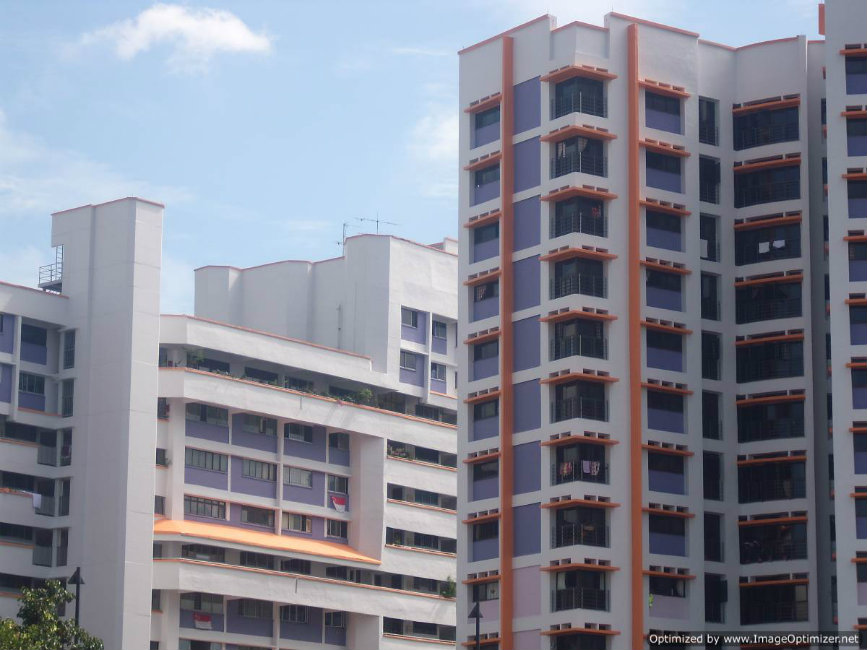2013 marked a year with an astonishing array of property rules and home mortgage regulations.
For many shoppers in the residential property market, they would have found their buying ability curbed. But not wishing to penalise home owners who had bought their properties before the new rules kicked in, the Monetary Authority of Singapore (MAS) have announced last month a relaxation of the rules for owners who are refinancing.
So just what are the mortgage regulations affecting refinancing, and what have been revised? We present here a summary of these.
Table 1: Rules for Refinancing
| With Effect From | Rules |
| 6 Oct 2012 | The maximum tenure of all residential property loans for individual and non-individual borrowers will be capped at 35 years.The sum of the tenure of the re-financing facility and the number of years since the first housing loan granted to the borrower for the purchase of that residence was first disbursed, cannot exceed 35 years. |
| 12 Jan 2013 | HDB loans by FIs: A Mortgage Servicing Ratio (MSR), or percentage of total monthly mortgage obligations to gross monthly income, not exceeding 30% will apply. |
| 29 Jun 2013 | A Total Debt Servicing Ratio (TDSR), or percentage of total monthly debt obligations to gross monthly income, not exceeding 60%, will apply to all property loans granted by FIs to individuals.A mandatory interest rate of 3.5% (4.5%) p.a. or the prevailing market interest rate, whichever is higher, has to be used in the computation of MSR and TDSR for residential (non-residential) loans.Exemption from TDSR for re-financing is allowed if the borrower only owns the property he is refinancing AND do not have any other outstanding property loan. |
| 28 Aug 2013 | HDB loans by FIs: The maximum loan tenure is reduced to 30 years.The sum of the tenure of the re-financing facility and the number of years since the first housing loan granted to the borrower for the purchase of that HDB flat was first disbursed, cannot exceed 30 years. |
| 10 Dec 2013 | Executive Condominium (EC) loans by FIs: A MSR cap of 30% for refinancing within the minimum occupation period of 5 years. |
Source: MAS
Table 2: Refinancing Rules That Have Been Eased From 10 February 2014
|
Revisions |
A borrower can be exempted from the TDSR threshold if
|
The MSR will not apply to the refinancing of loans for HDB flats and ECs that are
The maximum loan tenure for refinancing of HDB loans and residential properties is retained as the remaining tenure of the original loan at the point of refinancing, if
|
For all investments property loans, the TDSR threshold will not hold for refinancing up till 30 June 2017, provided that the followings are met
|
Source: http://www.mas.gov.sg/News-and-Publications/Press-Releases/2014/MAS-Broadens-Exemption-from-TSDR-Threshold.aspx
With interest rates expected to head north soon coupled with the loosening of refinancing mortgage rules, many owners are looking to refinance, or reprice, now. If you are one of them, read on for some information about the various types of home loans you can refinance/reprice to.
In case you are wondering what is the difference between refinancing and repricing: the former involves changing to a different financial institution whereas the latter means remaining with your current financier but changing to a different loan package.
Fixed Rate Loan
Table of Contents
As its name suggests, a fixed rate loan has its interest rate fixed. However, in Singapore, we only have packages with rates that are fixed for the first 3 to 5 years of the loan tenure.
Typically, fixed rate packages have interest rates that are higher than a floating rate loan. After the
fixed rate period ends, the interest rates will be converted to variable rates. Specifically, the interest
rate will be pegged at a discount below the financing institution’s board rate or floating rate, which
is based on SIBOR or SOR. Below is an example of the interest structure for a fixed rate loan:
Bank Y Fixed-rate Loan
|
Period |
Interest Rate (p.a.) |
| First Year |
1.20% |
| Second Year |
1.30% |
| Third Year |
1.45% |
| Fourth Year Onwards |
0.50% below the Board Rate |
Currently when interest rates are foreseen to ratchet up, more people are turning to fixed-rate mortgages as these provide certainty in the repayment amounts and a cap against interest-rate spikes.
Floating Rate Loan (aka Variable Rate Loan)
In contrast, a floating rate loan has its interest rates fluctuating during the entire duration of the loan.
Today’s floating (variable) interest rate loans come in three flavours:
a) Interest rates pegged at a discount below the Board Rate
b) Interest rates pegged at a margin (spread) above SIBOR (Singapore Interbank Offered Rate)
c) Interest rates pegged at a margin (spread) above SOR (Swap Offer Rate)
Financial institutions may not offer all three types, with b) being the most common. A loan pegged to SOR is less popular as it entails more uncertainty as SOR is prone to larger fluctuations being a function of exchange rates.
On the other hand, SIBOR is relatively more stable as it is the rate in which banks in Singapore lend to one another.
SIBOR and SOR are also valued for their transparency. Both are reported regularly in the mainstream media, and have various tenures. A 1-month, 3-month or 12-month tenure is more common. The longer the tenure, the higher will be the rate. However the rate remains static during the entire tenure.
Finally there is the Board Rate. This is the determined by the bank and differs across banks. It is usually unclear how the bank arrives at the Board Rate.
The interest-rate structure of a SIBOR-pegged package is shown here. After the first few years of the loan start-date, the spread is usually revised upward.
Bank Y SIBOR Loan
|
Period |
Interest Rate (p.a.) |
| First Year |
0.80% + 3-Month SIBOR |
| Second Year |
0.80% + 3-Month SIBOR |
| Third Year |
1.00% + 3-Month SIBOR |
| Fourth Year Onwards |
1.20% + 3-Month SIBOR |
With its relative stability and transparency, a SIBOR-pegged loan is highly popular during a low interest-rate environment – the interest savings a borrower can have with it far exceeds a fixed-rate loan.
Hybrid (Combo SIBOR / SOR) Loan
For borrowers undecided between a SIBOR and SOR, they can consider a package based on the average of both rates. So far, ANZ is the only bank here to offer a combo SIBOR / SOR mortgage.
Interest-rate Cap Loan
Finally for borrowers who are apprehensive of interest-rate hike but want to enjoy savings that comes with a floating rate loan, they can opt for a package with an interest-rate cap, such as the DBS Mortgage Rate Protector or POSB HDB Loan.
These loans typically have higher rates compared to conventional SIBOR-pegged packages but they provide certainty in how high rates can hit.
Bewildered by the multitude of mortgage packages on the market? Turn to the FREE service of an iCompareLoan mortgage expert today!
For advice on a new home loan.
For refinancing advice.
Download this article here.







